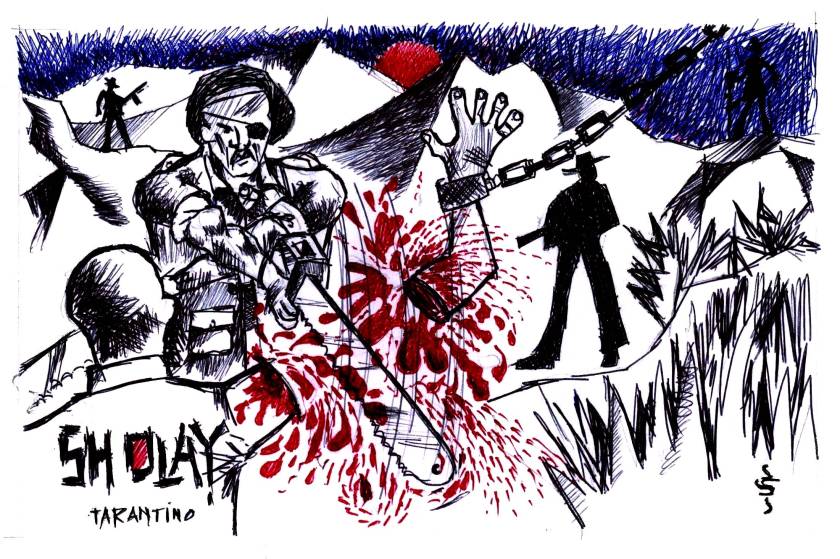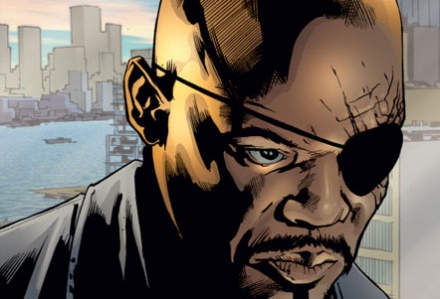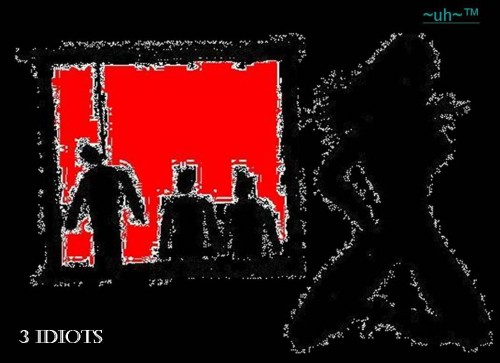This was the first review of this movie to be published on PFC [link], being cross posted here.

Written, edited and directed by: Bela Negi
Release date: 29 Oct 2010
I saw this movie during a private screening organized by the director, thanks to Kamal Swaroop. I had only read her interview [link] and did not have any clue about the story. All I knew was-
1. This movie is on and about Uttarakhand (temporarily named as Uttaranchal).
2. Bela Negi hails from Uttarakhand, is an FTII pass out and have worked with the legendary Renu Saluja.
3. This is the first movie where Deepak Dobriyal plays a lead role.
Before watching, I was intrigued by the title of the movie. The first thought that came to my mind that it must be a pahadi movie with a political subtext. But it wasn’t. The movie turned out to be much broader than that.
Plot Synopsys [Spoilers protected]
Daayen Ya Bayeen is a minimalistic contemporary tale of the people of Uttarakhand. The protagonist of our film, Ramesh Malija (Deepak Dabriyal) returns from a big city to his native village, Kanda, somewhere in Kumaon, for good. He is a day-dreamer, poet, visionary, husband, father and above all a messy loser. He returns to his roots, takes up a job as an English teacher in the local school and dreams of building a ‘Kalakendra’ right in the village, to nurture the indigenous talents. He is a ‘cool’ fashion conscious dude with his corduroy jacket, jeans, shades, cap et al, educated enough to carry books written in ‘simple English’ by Russian writers. He is welcomed quickly and ritualistically by the loving people- the motley bunch of villagers and his family. However, within no time he degenerates into a subject of ridicule, for his impractical ambition, poetic thoughts and radical ways of teaching his students. His wife has her own share of dissatisfaction on their general state of being, especially in light of her superlative brother’s urban success story. Things suddenly change when Ramesh’s entry in a jingle contest on TV, wins a brand new luxury car! Overnight, Ramesh becomes the village hero, the icon of triumph and epitome of bravura. Ramesh too flaunts his possession. But with the newfound luxury life becomes complicated for him. He quickly makes enough enemies to disrupt his otherwise mundane unexciting life and his dream of Kalakendra. Like the car, his life also rolls down in a bumpy road of twists and turns. He gets involved into a platter of problems involving a local political stalwart, his sister-in-law, huge financial loan burden and not the least, an absconding calf. The car, as a metaphor of life takes him to a juncture where he must take a turn towards the right direction, to salvage his dream and his identity.


Direction, Characters, Cast, Cinematography
It’s difficult to talk about this movie without revealing the plot spoilers, and there are plenty of elements to talk about. The prime subject remains as the people of Uttarakhand, their identity, aspirations and ambitions with the obvious backdrop being the picturesque Kumaon Himalayas. A simple tale involving an object of desire, a luxury sedan in this case, is then interwoven with earthy characters sprinkled with abundant ‘pahadi humour’ (if I can take liberty to use such term), a rocky version of dry humor tending towards malice. Some contemporary topics are part of this tale; education, television soaps and most importantly- identity of the people and their direction in life. The movie delves into few fundamental questions. What is achieved by creating a new state? Is such transformation, where girls aspire to be named as the much married bitchy TV serial women, kids walk and talk in English without knowing what they are learning, justified ? Where migrating to a big city is still the biggest aspiration ? Men gamble with cards and get drunk by sundown. How does this new state affect the people and boost their confidence ?
Bela, hailing from Uttarakhand, knows her roots, feels the dilemma and expresses it in cinematic medium. I have observed, when a writer directs a movie, there’s always a lot of attention to detail. Daayen Ya Baayen would be a treat to the observant audience, to gather the subtle nuances of the characters, the slick coordination of certain sound and visuals to create a humorous note, the framing, dialogues and at times, silent expressions. Quite laudable debut.


There are quite a handful of characters, each with their own idiosyncrasies and colourful traits. There’s a character called ‘Haruldi’. She is an octogenarian lady in sneakers who’s wealthy enough to disburse loan in thousands. There’s the bidi smoking mother of Ramesh. Then there are village bumpkins and yokels played by Manav Kaul (1971, Jajantaram, Mamantaram), Badrul Islam, local political stalwart Jwar Singh (Jeetendra Bisth) and his sidekicks. A veteran ‘Frosted’ school principal (Girish Tiwari) who invariably ends his speech with “miles to go before I sleep”. One of the most important aspects on this film is that it is also made with the local people. Other than three major roles (Deepak Dobriyal, Manav Kaul and Badrul Islam), all other characters are played by local actors and artistes. Reportedly, some of them have faced a camera for the first time. Large number of school students are featured in certain scenes and as I understand, shooting were conducted without any workshop or training. Ramesh’s family members, especially his little kid (Pratyush Sharma) and his wife (Aditi Beri) sourced from the region seamlessly merges with the household and domestic brouhaha. The wife, particularly in the scenes of her ‘outrageous housekeeping’ antics is hilariously natural.

Deepak Dobriyal is simply brilliant as the protagonist. His acting prowess probably comes from his theatrical background. I have always admired his work, irrespective of the character he plays. One of his best performances probably was in Gulaal, which was shot much before he was noticed on Omkara. Deepak is a powerful actor. For the attentive audience, he is a treat to watch on screen. Remember the paan shop scene of Gulaal ? Or the bridge scene in Omkara ? He has handled difficult roles with panache in films like 13 B, Delhi 6 and Shaurya. In this film, his character is a sublime combination of a poetic dreamer and an ambitious visionary, but unintentionally ending up being a loser or playing the jester. He teaches his son to hand stand, as that will facilitate blood flow to the brain. He makes poetry. He learns driving. He drinks country liquor. Still, he tries to impart basic values to his students and his son. He does it with intensity. This is undoubtedly, his one of the meatiest and finest performance on screen. His character is beautifully supported by Badrul Islam, a fanboy hopelessly sweet in his own way. Pratyush as Ramesh’s son radiates lot of potential who reminds of the kids in Majid Majidi’s films.
Like recent Udaan and Do Dooni Char, this film too makes way for filmmakers who, while trying to entertain, are also willing to create meaningful content on realistic themes. While the movie is predominantly based on the people and societal culture of Uttarakhand, it talks about certain values, identities and aspirations which is identifiable beyond geographical boundaries. However, one must not expect a somber Blue Umbrella here. Apart from some obvious similarities (people, mountain), DyB deals with is much down to earth issues and materialistic aspirations, but with lighter mood. The tone of the film is bright and upbeat, and it never loses its humour even at its darkest point.

Though DyB is a low budget film, the production value is high. The cinematography( Dop Amlan Datta), costumes (by Nikunj Vyas), music are elaborate, well detailed and very entertaining. The magnificent locales, panoramic views, bright sunny days, winding hilly roads, vivid hues are all part of the captivating storyline, all captured candid which prevents it to become a documentary. There’s a scene where, Ramesh with his son walks along the narrow stone steps and a rainbow shimmers on the horizon- absolutely stunning! The film is full of many such colourful occasions of happiness, sorrow and surprises. Arguably, films shot on picturesque mountainous locations are somewhat vulnerable to the landscape overpowering the characters. But it’s the good director’s panache to make them blend with the terrain, but to retain their own importance in the plot. Fine examples are Eric Vali’s Himalaya (aka Caravan), Ray’s Kunchenjungha and Shohei Imamura’s Ballad of Narayama. Bela, is quite successful in achieving a fine balance between the characters and the backdrop, interdependent but collectively complete. The BGM by Vivek Philip (Sorry Bhai, My Brother…Nikhil) is upbeat and pertinent with the visual setting. There’s only one song, a spontaneous upbeat one, sung by Zubin Garg on which the entire village makes merry !
The narrative is simple, believable, straightforward and chronological. Though in the otherwise logical narrative, absence of mobile phones or a gas filling station does feel a bit conspicuous. Remember, the car plays the pivotal role (also to some extent literally, by the end of the film). While almost all aspects of the car and driving was captured in detail and expressed with much humour, one or two instances of gas filling could have been added, keeping practicality in mind. In another scene against sunset where Deepak leans against his sedan, quite looks like an advertisement, probably of a car. Otherwise the screenplay is taut and at places emotionally involving. The films takes it own time to develop the plot, which some may term as a slow start, but once Deepak takes the steering, there’s no brake.
Overall, a high quality satire intelligently packaged within an entertaining cinema. Watch it, you may feel right after you’ve left the theater.











